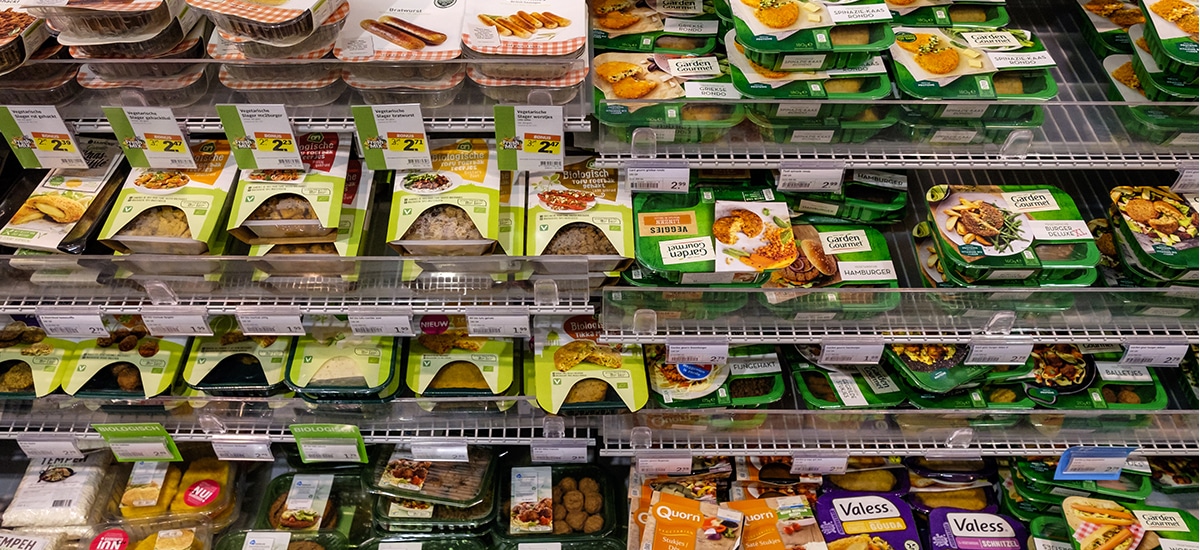
Are meat alternatives a trend or is it solving issues?
Meat alternatives. It’s a concept traditionalist meat-eaters greet with a shudder, or brush off as a passing fad. But is this growing industry truly just the latest food trend, or is it a solution to some of our world’s sustainability concerns?
Stuart Mead, General Manager, Viking Food Solutions recently attended the Official Process Expo, attending thought-provoking events, bringing this exciting innovation back to Australia, seeking ways how we can implement more of this technology into our market.
His take, is that that the future of the meat alternatives market is being widely, and seriously, discussed in the industry. The general takeaway is that we should consider this from the perspective of, how are we going to be feeding 10 billion people?
This is one of today’s big questions. Farming is one of the most environmentally straining activities humans do. Agriculture contributes more greenhouse gas to the atmosphere than all “cars, trucks, trains and airplanes combined”, National Geographic reports. Deforestation for new farms, often carved out of forests and jungles, extinguishes biodiversity. And the waste collected by modern industrial animal farming contributes to ocean dead zones.
By 2050, they’ll be an extra 2 billion mouths to feed. Doing so in the traditional manner could not only be catastrophic for the environment, but also near-impossible to sustain. Because of this, there have been a lot of scientists and business startups alike searching for viable alternatives.
“It’s a mega trend that clearly has gotten a foothold,” said Chris Kerr, Chief Investment Officer at New Crop Capital, a venture capital firm which invests exclusively in companies looking to disrupt the meat, eggs and dairy industry. “Everyone is paying attention to it.”
There are two major form of meat alternatives:
Plant-based
Artificially-grown meat
Plant-based Alternatives
Instead of trying to re-create meat, this option simply creates healthy and taste-comparable vegetable dishes. A great example is America’s Impossible Foods, which has debuted a veggie patty which tastes – and bleeds – just like meat.
Part of their secret is the inclusion of heme, which is found in large quantities in animal muscle and gives meat its colour and taste. However, while this quiets animal cruelty concerns, it may not have an effective enough reduction on agriculture’s environmental impact.
Artificially-grown Meat
The other alternative, which involves growing meat artificially in a petri dish from animal cells, has been a hot topic for the past few years. It would certain be more efficient, as it is calculated cells from a single cow could create around 175,000 quarter-pounder patties.
Feeding an extra 2 billion looks like a piece of cake when you consider those figures. However, once again, the true environmental impact of this type of meat is hard to calculate, and it’s debatable whether swapping to this type of protein would have a significant positive environmental impact.
Carolyn Mattick, a professor of sustainability at Arizona State University, argues; “Until high-quality, peer-reviewed life cycle analyses are performed on specific production processes, we really can’t quantify the environmental impacts of cell-based products or determine the tradeoffs with respect to livestock rearing,”
In just 30 years’ time, by 2050, we will have to have a way to feed more people, more sustainably. Considering that at the moment, our food production is far from sustainable, that’s a huge goal. It will require a lot of concerted effort and innovation to achieve, but it seems likely that traditional meat alternatives will be at least a part of the solution.
Equipping the food industry to grow with food processing and packaging solutions
call 1300 88 99 51
email [email protected]
room 35 Shirley Way, Epping VIC 3076
room 9 Mcilwraith St, Wetherill Park NSW 2164
room 21 Hoyle Rd, Hope Valley WA 6165
room 27 Beal Street, Meadowbrook QLD 4131
room 7 Chadderton Bvd, Epping VIC 3076
room 40 Logistics Boulevard, Kenwick WA 6107
room 25 Hayton Road, Wigram, Christchurch 8042, NZ
Connect with us on LinkedIn
